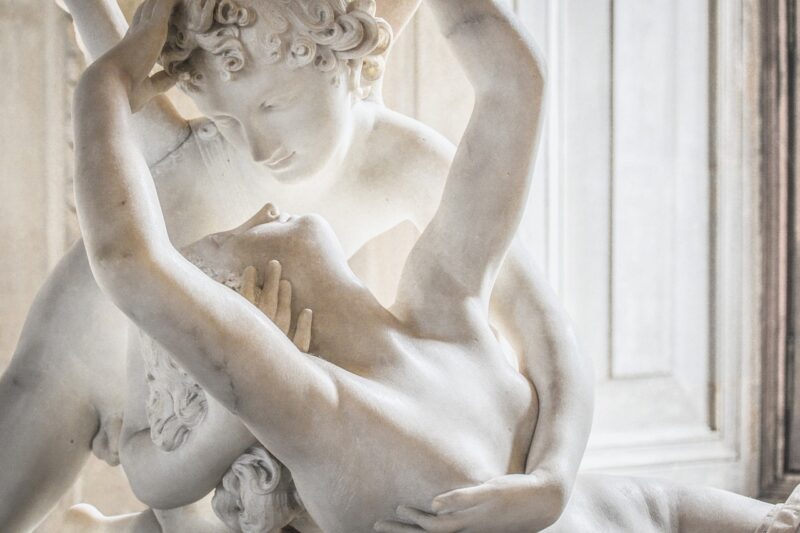
Sculpture is one of the oldest forms of artistic expression, dating back to prehistoric times. Ancient civilizations crafted stunning sculptures using rudimentary tools and techniques that, while primitive by today’s standards, showcased their creativity, engineering skills, and dedication to capturing the beauty of the human form and the divine. In this article, we delve into the fascinating world of ancient sculpture, uncovering the meticulous methods and processes through which these iconic works were created, even in the absence of modern technology.
1. The Historical Context of Ancient Sculpture
Before we explore the techniques and tools used by ancient artists, it’s essential to understand the cultural context in which they created their works. Ancient sculptures served various purposes, from religious artifacts to political symbols and decorative pieces in architecture.
Throughout history, different civilizations, such as the Egyptians, Greeks, and Romans, left behind remarkable sculptural legacies. The Egyptians created statues that served as tomb guardians, while the Greeks celebrated the human form through idealized representations of gods and athletes, and the Romans often produced realistic portraits of their leaders to assert their power.
With each culture bringing its unique perspective and technique to the art of sculpture, we can begin to appreciate the complexity involved in these ancient creations.
2. Materials Used in Ancient Sculpture
The choice of materials in ancient sculpture was integral to the creation process, as artists adapted their methods to suit their available resources. Some of the primary materials used included:
- Stone: Stone was a popular medium due to its durability. Artists used limestone, marble, granite, and basalt, each requiring different techniques for carving. Marble, especially cherished, was favored by the Greeks for its fine grain and translucency.
- Wood: Although less common due to its susceptibility to decay, wood was used for smaller sculptures and relief carvings, particularly in cultures like the Celts.
- Metal: Bronze and other metals were often used for casting sculptures. The lost-wax casting method revolutionized metal sculpture, allowing for greater detail and durability.
- Clay: Clay was used in the creation of terracotta figures and prototypes, often fired in kilns to achieve hardness and permanence.
Understanding these materials helps illuminate the challenges ancient sculptors faced and the innovative methods they employed to bring their visions to life.
3. Tools and Techniques of Ancient Sculptors
Despite lacking the advanced tools available today, ancient sculptors employed a range of basic implements and techniques to achieve remarkable results:
- Hand Tools: Ancient artists used chisels made from stone or bronze to carve their sculptures. These tools varied in size and shape, allowing them to create detailed features and textures. Other tools included hammers, drills, and abrasive stones for polishing surfaces.
- Scaling Techniques: Artists often utilized measuring tools such as ropes or calipers for proportioning their figures accurately. The grid system, where the sculpture was divided into smaller sections, allowed artists to scale up their designs from sketches, ensuring accuracy in size and proportion.
- Modeling with Clay: Before committing to stone or metal, sculptors would often create smaller models in a more malleable material. This process allowed them to explore their designs and make adjustments before executing the final work in a more permanent medium.
- Lost-Wax Casting: This sophisticated technique involved creating a wax model of the sculpture, encasing it in clay, and then melting the wax away to leave a mold for pouring metal. This method allowed for intricate details and a more controlled final outcome.
These methods reflect the resourcefulness and ingenuity of ancient sculptors, who crafted masterpieces without the conveniences of modern technology.
4. Iconic Examples of Ancient Sculptures
Several iconic sculptures stand testament to the skill of ancient artists:
- The Great Sphinx of Giza (Egypt): Carved from limestone, the Sphinx is one of the largest sculptures in the world, believed to represent Pharaoh Khafre. Its enduring presence highlights the ambition and dedication of ancient Egyptian architects and sculptors.
- The Statue of David (Italy): Michelangelo’s Renaissance masterpiece took inspiration from classical sculptures, embodying the human form’s beauty and perfection. While technically from a later era, it reflects the enduring influence of ancient techniques.
- The Venus of Willendorf (Austria): This small limestone figure symbolizes fertility and femininity and was sculpted during the Upper Paleolithic era. Its significance lies not only in its age but also in its representation of societal values regarding femininity.
- The Elgin Marbles (Greece): A collection of classical Greek marble sculptures that once adorned the Parthenon, showcasing the extraordinary craftsmanship and artistry of ancient Greek sculptors. Each piece exemplifies the idealized human form that the Greeks celebrated.
These examples provide a glimpse into the artistic achievements of ancient civilizations and the lasting impact of their sculptures on contemporary art.
5. The Legacy of Ancient Sculpture
The influence of ancient sculptures extends far beyond their time, inspiring countless generations of artists. The techniques and styles developed by ancient sculptors laid the foundation for further artistic evolution, profoundly impacting arts during the Renaissance and beyond.
Ancient sculptures are preserved in museums worldwide, providing insight into the past while inviting further exploration of materials, methods, and cultural significances. Today, scholars and artists alike continue to study these masterpieces, not only as art but also as historical artifacts that offer a window into the philosophies, beliefs, and values of ancient civilizations.
Conclusion
The journey of understanding how ancient sculptures were created without modern tools reveals both the creativity and the determination of past civilizations. Through their mastery of materials and techniques, these artists managed to produce works that continue to captivate and inspire.
As we admire these enduring pieces of art, we also honor the rich histories they represent, celebrating a legacy of creativity that transcends time and continues to influence contemporary artistry and craftsmanship. The stories behind each sculpture remind us of the boundless human spirit and the quest for beauty in every form,
paving the way for embracing creativity in our lives today.






